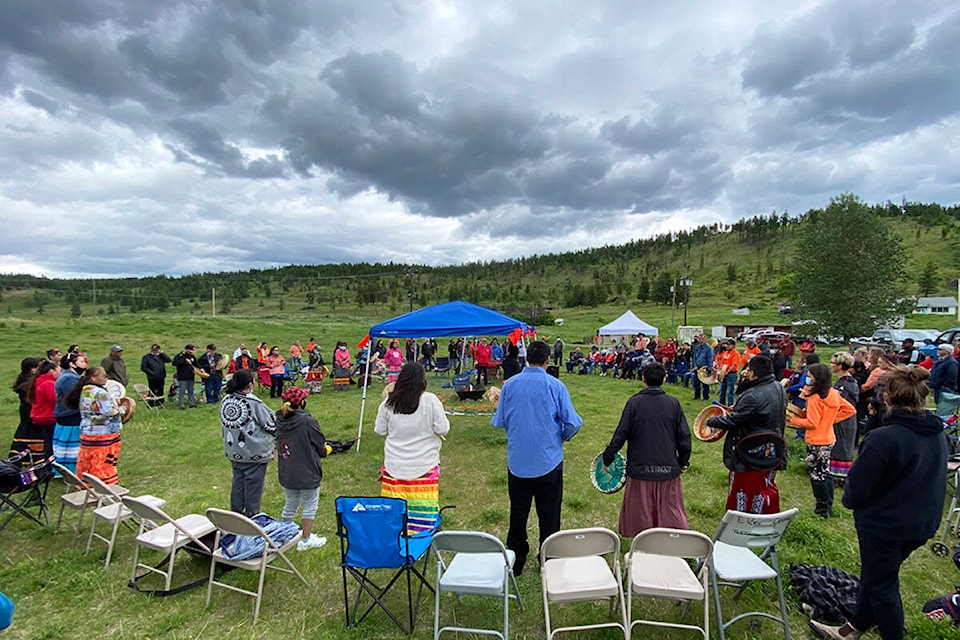Submitted by Irene Gilbert and Lorelei Boyce
Tsq’escen’ Canim Lake Band Residential School Survivors
Styétemc – People of Interior
Tsq̓éscnemc – Canim Lake people – People from Broken Rock
St. Joseph’s Mission was located near Williams Lake, B.C. “The Mission” was run from 1891 to 1981 by the Roman Catholic Church and the Government of Canada.
Children from Secwepemc Nation, Chilcotin Nation, and Carrier Nation, as well as other Indigenous nations, were required by law to attend the Mission. There are many horror stories of children being forcibly removed from parents and families and transported to the Mission.
In the early days, the children were loaded into cattle trucks to travel to the Mission where they would live throughout the school year. The government’s goal at that time was to remove the “Indians” from the child, consequently, children were harshly punished (tortured) if they were found speaking their language.
Parents knew that these schools were little more than concentration camps for First Nations children, but they were helpless to stop their children from attending due to the law. Some parents faced jail rather than send their children.
Today we have approximately 48 surviving members of our community who attended St. Joseph Mission or Kamloops Indian Residential School. The youngest surviving member is 52 and our oldest is 85 years old. These numbers may not contain the number of Tsqescemc who attended Day School on reserve. Many of the teachers were recruited from St. Joseph’s Mission and came with their ideas of indoctrination into Roman Catholic ideology, as well as maltreatment of children.
We have had four challenges as Indigenous people: The Fur Trade, Missionaries, the Gold Rush and Settlers. Many of these brought in diseases that our People had not been exposed to, causing catastrophic epidemics throughout the area. Two extinct Secwepemc bands are located at Green Lake and the head of Canim Lake.
Irene Gilbert was taught about the holocaust in English 12: The executions of babies, the cruel experiments on human beings, and Jewish people being put to death in the gas chambers. Why is it okay to teach the Holocaust in B.C. high schools, but not the residential schools trauma?
In January 2023, Kúkpi7 Willie Sellars spoke of all the trauma our People experienced as a result of the maltreatment at the Mission.
Kukpi7 Willie Sellars and Sugar Cane Band have agreed to head the archaeological investigation into how many unmarked graves are on the former grounds.
As of today there have been 98 graves of children found and further exploration is needed to determine the exact number of children who died and were buried in unmarked graves at the Mission.
I (Lorelei Boyce, former student of St. Joseph’s Mission) know that there will never be an exact number because many of the bodies of children and babies were disposed of by other means.
